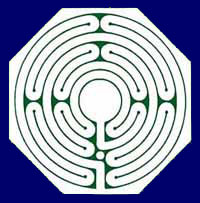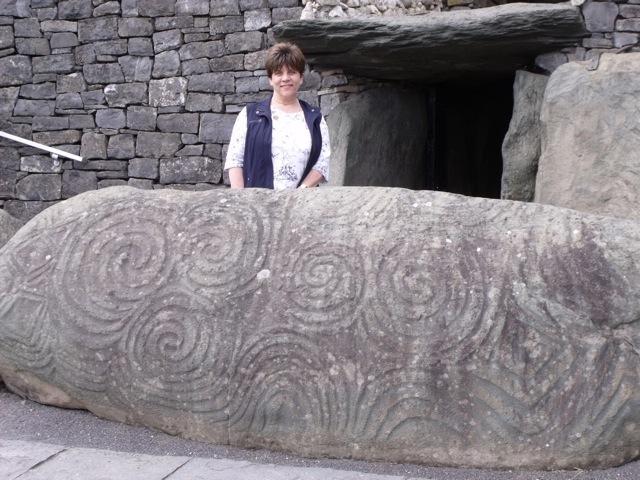Labyrinths have been used for thousands of years.
They’ve been used as tools for meditation, relaxation, healing, insight & more. Not associated with any one tradition or culture, their origin remains a mystery. Ancient labyrinths have been found throughout the world.
Labyrinth walking is simple and straightforward.
No special training is needed! Simply by walking the labyrinth’s path, people can realize the benefits. People are often surprised at how powerful their experience can be. Want to try a labyrinth walk? Find labyrinth locations around the world! https://labyrinthlocator.com
Learn about the different ways you can walk the labyrinth.
What do labyrinths look like?
The labyrinth, consisting of a single winding path that leads to the center and back out, is level with the ground; there are no walls. Permanent labyrinths are made from materials such as rock, pavers, or tile—and portable indoor labyrinths are typically made from painted canvas. A labyrinth’s diameter can range from as little as twelve feet to fifty feet or more.
How do labyrinths work?
To walk the labyrinth, one starts at the beginning of the path, follows the twists and turns to the center, pauses, and walks out using the same pathway. Unlike a maze, there are no choices to make about which way to turn, so one is easily able to let go of thoughts and relax the mind. A sense of time and space may be suspended, allowing one to access clarity and insight. A significant physiological effect is created by the many left-to- right and right-to-left turns on the path, which can balance the left and right sides of the brain and provide a centering experience.
How are labyrinths being used today?
A labyrinth walk can be a great tool for relaxation, team-building and clarity of mind—and it’s a very accessible tool for walking meditation. According to Veriditas, an organization dedicated to introducing people to the labyrinth, “Labyrinths are open to all people as non-denominational, cross-cultural blue-prints for well- being. The practice of labyrinth walking integrates the body with the mind and the mind with the spirit. They can be found in medical centers, parks, schools, prisons, memorial parks, cathedrals and retreat centers as well as in people’s backyards.” Here’s information about labyrinth use in health-care settings.
Here’s an excerpt from an article in the July/August 2008 Arrive Magazine. “Turns out labyrinths are everywhere—universities, open fields, botanical gardens, inns and even private estates. Most people see the spiral motifs as attractive floor decorations, not knowing that their history dates back some 4,000 years. Labyrinth designs have been found on Greek coins, Celtic stones and Native American baskets. Now, the ancient practice of labyrinth walking is being revived as more and more people discover its meditative powers.”

Want to find out about booking a program for your group?
I’d love to hear from you! I’ll bring my 24′ indoor labyrinth and facilitate the walk for your group. Walks typically take between 30-45 minutes and the labyrinth can accommodate a dozen people at a time. We can also set up the labyrinth for half-day or full-day meetings, conferences, or special events. I’m happy to customize a program to fit your needs.
